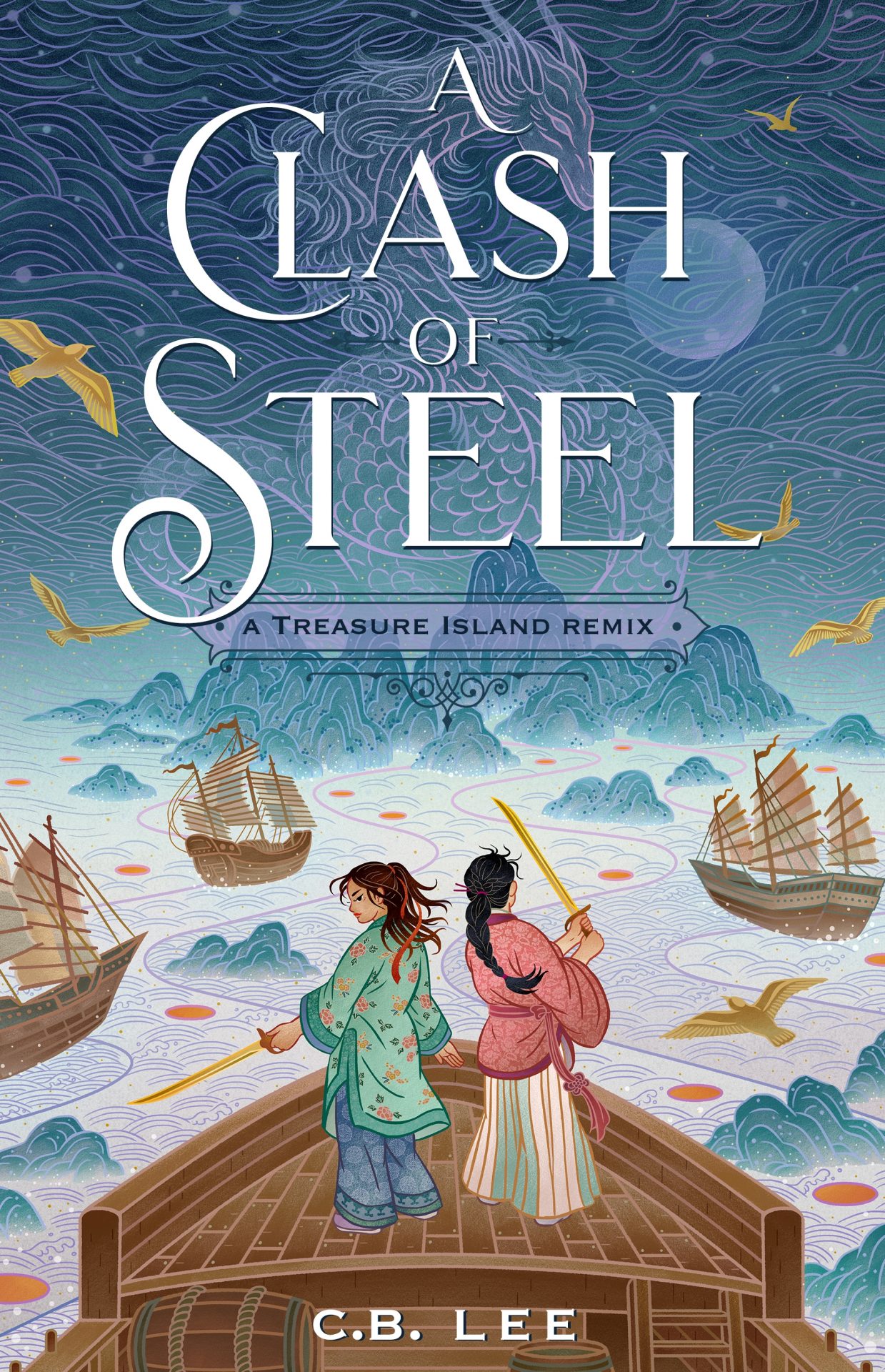The books we read as children shape us. But for the majority of kids those books don’t reflect them or the realities of the historical times that they represent. A new series of books from Macmillan aims to correct that. Remixed Classics showcases some of the best contemporary authors taking on literature’s most revered titles.
Treasure Island is one of those books that many kids read growing up. But author C.B Lee—who is taking on the title in her new novel A Clash of Steel—had a far more personal connection to pirates and the tales we tell about them. “As a child, my mother would often tell me stories about her escape as a refugee after the fall of Saigon,” Lee told Nerdist.

Macmillan
She continued, “Her encounters with pirates led me to question the conflicting nature of piracy in general and the choices one might make to engage in those acts. Her refugee ship was seized by pirates. The pirates led all the men off the boat and then proceeded to search for valuables, taking what cash and jewelry they could find. After an hour, the men returned, and the pirate ship sailed off, leaving the refugees to their escape. The men had been provided food—a warm meal—during the siege. Not all the men had returned. Some had chosen to go with the pirates.”
The anecdote stuck with Lee for years. Lee recalled, “I grew up with this story, remembering not just the fear but also the desperation. From the refugees on the ship, from the pirates themselves. My mother would say it was both clever and cruel to trick the men into not fighting. There were other pirates, stories of refugee ships that never made it to shore, pirates who seized vessels and destroyed lives. There were also ships who towed those to safety, ships with people who had nothing and spared what they could to help others. The pirates who boarded my mother’s refugee ship were confusing to me as a child. Weren’t they the bad guys? Why did some of the men choose to go with them if they were? If the pirates had food to spare, why did they not feed all the refugees?”
Those intriguing questions Lee had as a child drove her as an author. “It was this questioning, this line of thought that I wanted to bring to Treasure Island, to engage with the idea of piracy itself in a way that explored the nuance of why,” she said.
For her queer pirate adventure, the real life pirate Zheng Yi Sao heavily inspired Lee. She told us Zheng Yi Sao is regarded as the most successful pirate in history. Lee first learned about her as a young adult but as she discovered more she had a burning question: “Why were there not more stories about her?”
Caroline Tran
Lee explained why Zheng Yi Sao inspired her. “Her leadership united thousands of pirates and brought multiple governments to their knees, and I wanted to share this aspect of history that people may not be familiar with. I also wanted to engage with the idea of piracy itself, to question and have readers question the motives of the characters beyond a moral binary of who was good or bad, but to look more closely at the society that produced thieves and beggars and piracy and question that. I also wanted to center a queer experience in this historical time period.”
That choice was key but also spoke to what resonated with Lee about Treasure Island. “For me, the emotional heart of Treasure Island was the call to adventure and how that changes our main character, so immediately when changing the setting and having the hero be a young queer girl whose own desires and identity and expectations from the world are completely different.”
Along with researching the life of Zheng Yi Sao, Lee also dove into “the rise and fall of piracy in the South China Sea itself in the 18th and 19th century and how it intersected major political movements in Vietnam and China at the time. I also spent time traveling and exploring areas of interest that I wanted to feature in the novel, such as Ha Long Bay in Vietnam, where I wanted to set the island of the legendary buried treasure so I could bring those experiences into the novel; the feel of paddling through an underwater cave, hiking up jagged peaks, watching a sunrise over the emerald waters,” the author revealed.
As her deep research and passion for the project shows, Lee feels exhilarated about the novel being out in the world. “I’m excited to share my story and hope that it invigorates readers to question what makes a classic a classic, and to be inspired to look to histories that they may not have learned,” Lee shared. “I hope readers feel the sense of adventure and not only enjoy the story, but want to question, investigate, and explore history beyond what has been taught to them. I hope readers will be inspired to read widely from authors of color, disabled authors, queer authors, to learn from marginalized perspectives.”
And as for what Lee is most excited for readers to discover as they pick up A Clash of Steel, she says, “It’s difficult to choose a single moment, but I particularly love Xiang’s character growth as she goes on this journey and becomes more confident about who she is and what she’s willing to risk for the people she cares about. There are a lot of fun reveals and twists in the last third of the book that I hope readers find as exhilarating as I did to write them!”
A Clash of Steel is available now.